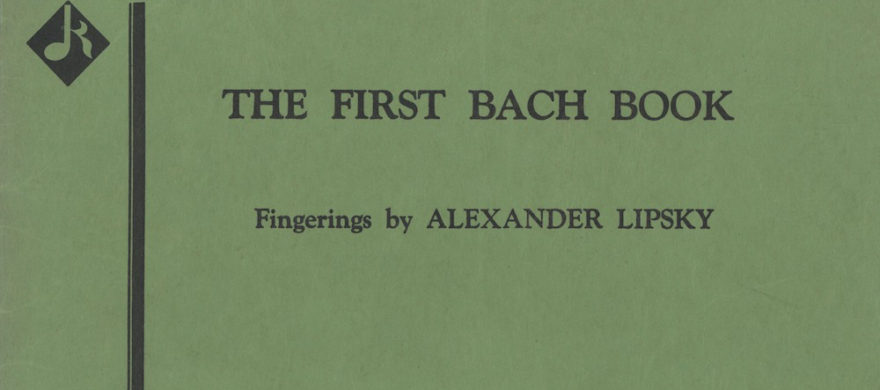
Sergei Rachmaninoff, the Russian-born composer who died in 1943, was reputed to have enormous hands. Helpful, these mitts of his were, when sitting down to play the piano. Many consider him to be one of the greatest concert pianists of all time.
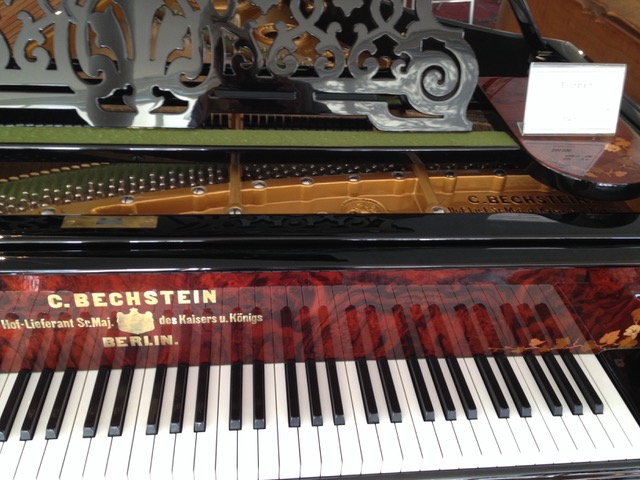
It was said that Rachmaninoff could hold out his right hand, palm side down, and reach his thumb under his four other fingers to extend his thumb about four inches past his little finger. Try that at home, if you wish. I dare you.
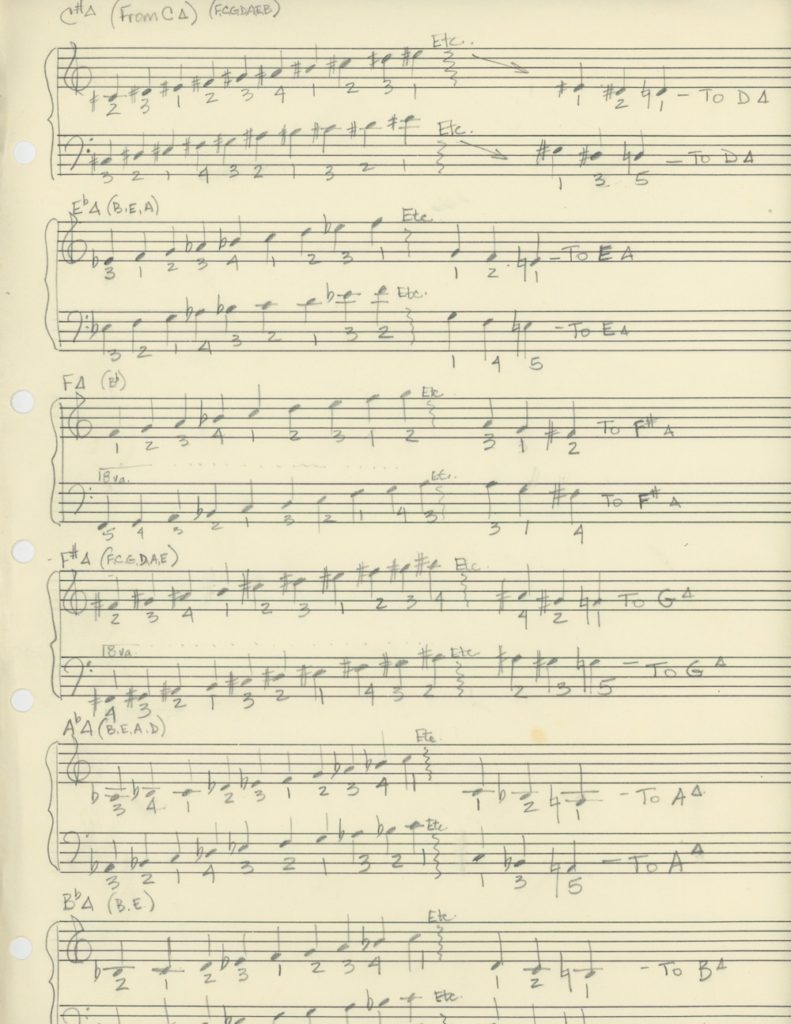
My mom relayed that piece of piano history as we were driving to lunch following another one of my tortuous Saturday piano lessons. I was about 9 and drank a lot of milk. That latter fact may seem incongruous in this context except that because of my insatiable desire for milk, each week our milkman delivered five quarts of milk. As it was my weekly chore to rinse the bottles and place them on the front porch for pick up, I devised a Rachmaninoff maneuver of my own. Each finger of my right hand would grab the inside lip of the bottles and carry them out to their metal-box container. The tinkling of the glass bottles against one another was sonorous; the pain was nauseating. The desired result, to be a better piano player, was negligible.
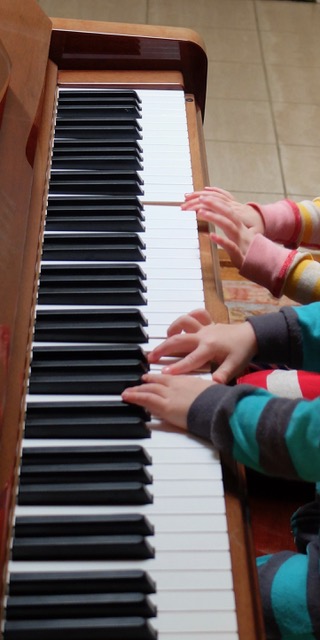
My music lessons began in kindergarten at the home of Mrs. Reynolds where we little tykes were shuttled from the schoolhouse to the musty, flouncy, chintz-and-fringe adorned living room that housed two baby-grand Steinways, placed back-to-back…á la Ferrante and Teicher. It would be a couple of years until I was given the nod to sit as a student at one of those behemoths (the piano, not Ferrante nor Teicher). First, one had to master Rhythm Band.
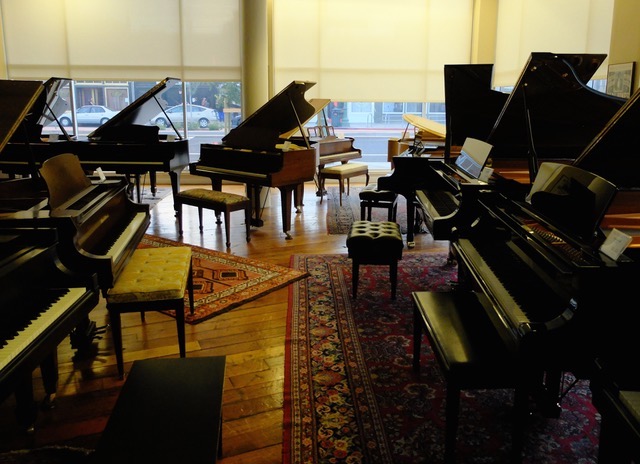
Upon arrival at Mrs. Reynolds’ house, we gaggle of tots sat with our scrawny legs crisscrossed and merrily anticipated the ritual of lugging around the basket of instruments. It was a very good day indeed when I foraged and retrieved a triangle. More useful than one would think, the triangle added a delicate, nuanced ding to an otherwise clamorous, overblown cacophony of drums, cymbals (my backup choice), kazoos (too complex), and rhythm sticks. That’s a lot of percussion if you ask me. But, kids like to bang drums and not too slowly as it turns out. I would wait for Mrs. Reynolds’ conducting cue (the drop of her arm on the downbeat and the subsequent ripple of her upper-arm flab) and lighten up the band’s din with my ding.
Not everyone continued with postgraduate Rhythm Band enrollment. But, Mrs. Reynolds was the obvious choice for those parents who thought piano lessons were the one and only extracurricular activity worth their time and money. Her students were a prodigious mix of boys and girls, youngsters to teens. My parents, neither of whom were skilled at the art of piano playing, looked to Mrs. Reynolds for their little girl’s musical education. What a mistake.
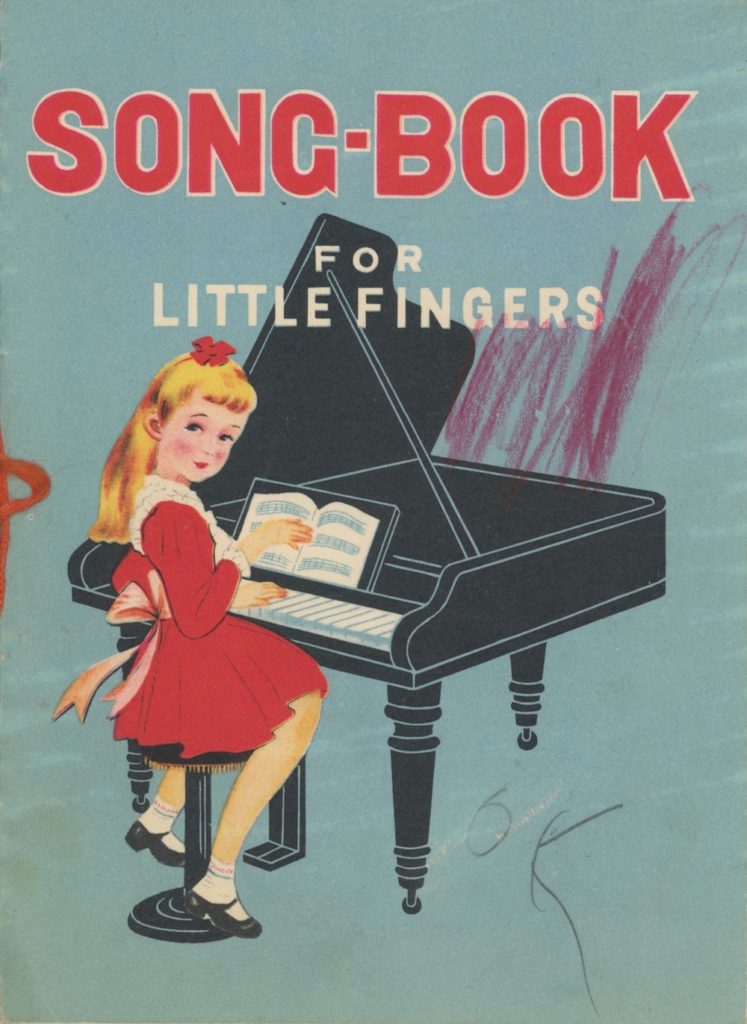
At some point after Rhythm Band but before the piano lessons formally began, a lovely piece of mahogany furniture was delivered to our home. This instrument was carefully placed against a wall, as it was an upright piano, not too close to the front door and away from any sunlight that might beam its deadly rays on that virgin, lustrous wood. Although, there’s no way an upright can win a beauty contest if there’s a grand or even a baby-grand piano on the runway, the tonal quality of a fine upright piano is not to be dismissed. As a matter of fact, Hoagy Carmichael, I read, composed and played on an upright piano. So too, Scott Joplin. Even more significantly to me, our son. He went on to graduate with a degree in music composition, and he would sit for hours composing melodies that were ominous and dark or lyrical and snappy. Most enjoyably for me, the wafting notes emanated just steps away from where I was preparing dinner. I could hear his state of mind without his speaking a word. But, I’m getting ahead of myself.
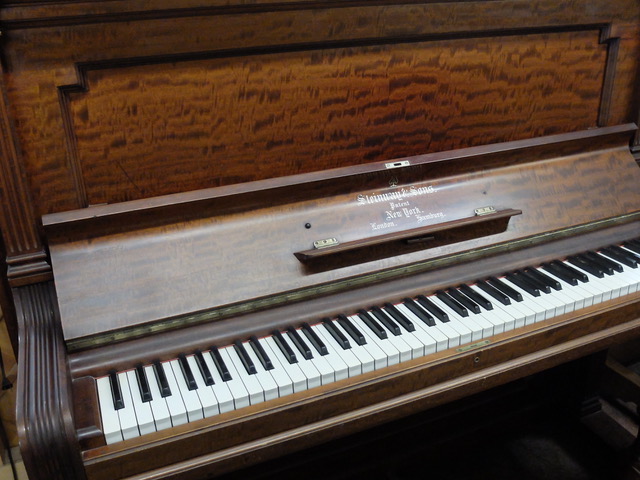
If my weekly lesson at Mrs. Reynolds’ went well, I anticipated receiving either a gold (“Grandioso!”) or silver (“Reprise!”) star if both my practice log entries and my performance in class were deemed worthy. If I were distracted by Mrs. Reynolds’ stunning and shimmering colored-glass or rhinestone jewelry, I would have my knuckles swiftly swatted by her 12-inch wooden ruler. Undaunted, like brushing off a bad habit, I would involuntarily swoon over the way the sun’s rays would illuminate those burgundy-toned jeweled clusters on her ears or the emerald glistening facets on that one enormous brooch. But that ersatz sapphire pendant? Mesmerizing.
Smack!
I would collect my book of scales, my sheet music, and my spiral steno pad—the one with my weekly lesson plan—and collapse into my mother’s car. My mom might notice my bruised knuckles and offer to buy me my own faux-bejeweled necklace. Ha ha. She laughed. Litigious days were yet to come…as was an awareness of the inappropriateness of corporal punishment. Placated by mom’s humor and ever hungry, we would head for a slice of heaven in the form of a sandwich–the weekly repast at the upstairs ladies’ café, Phairs, where I always took a menu to act like a grownup but never for a second looked it over. My lunch was tuna on white bread and chocolate milk and my companion was my best friend, mom.
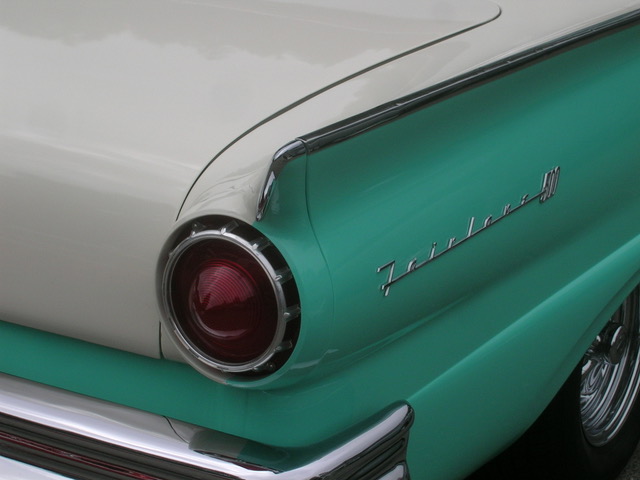
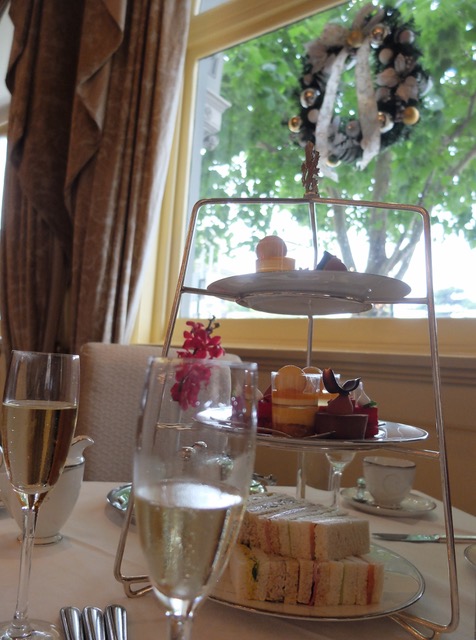
My mother played only one tune on our piano. She couldn’t read music but somehow she learned this piece and played the same 12 measures of it. Nola became her theme song. Unlike her, though, I had scores of music I could play, not any of it well, and I could read music (very slowly; those bass notes were sheer torture to decipher). I had an uncanny sense of rhythm for which I credit my triangle virtuosity as well as that damn metronome, in matching mahogany, that sat atop our piano and peered down in ridicule from its aloof triangular-shaped housing if my playing slowed down, sped up, or if I paused for any length of time to plead with my mother to let me stop practicing because AN HOUR IS TOO LONG.
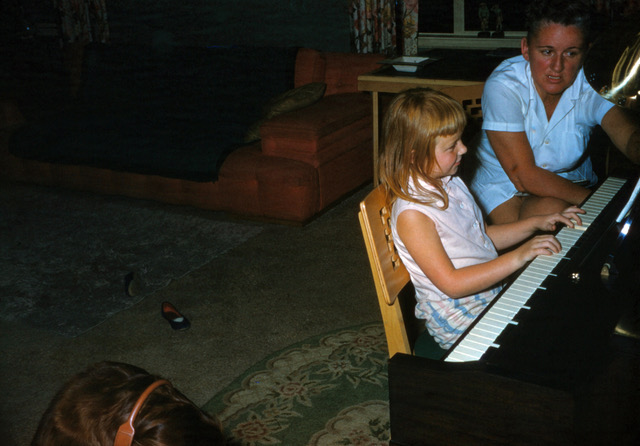
My father agreed with me. An hour of listening to Bach, Schumann, Mozart, or even Chopin (who doesn’t like Chopin?) was too long for him. It was time, he told me sometime in the 6th grade, to play popular music. He was going to talk to Mrs. Reynolds. I couldn’t have been happier with this turn of events. Mrs. Reynolds, who by now my best friend and frequent duet partner, Hallie (Teicher to my Ferrante), and I referred to as Renny, was onboard. And, that is how in 1961 the popular piano pieces I was now given to play were not on the Billboard charts as were Ricky Nelson’s, “Hello Mary Lou,” or Chubby Checker’s, “Let’s Twist Again.” Instead, I left my Saturday lessons with the Jerome Kern songbook in my zippered music binder. First assignment: Smoke Gets in Your Eyes. I must have branched out from there because what has become my own personal “Nola” moment after 57 years is Tea For Two. Unlike my mother, I can’t summon up more than 3 or 4 measures at most…for which my own children can thank me someday.
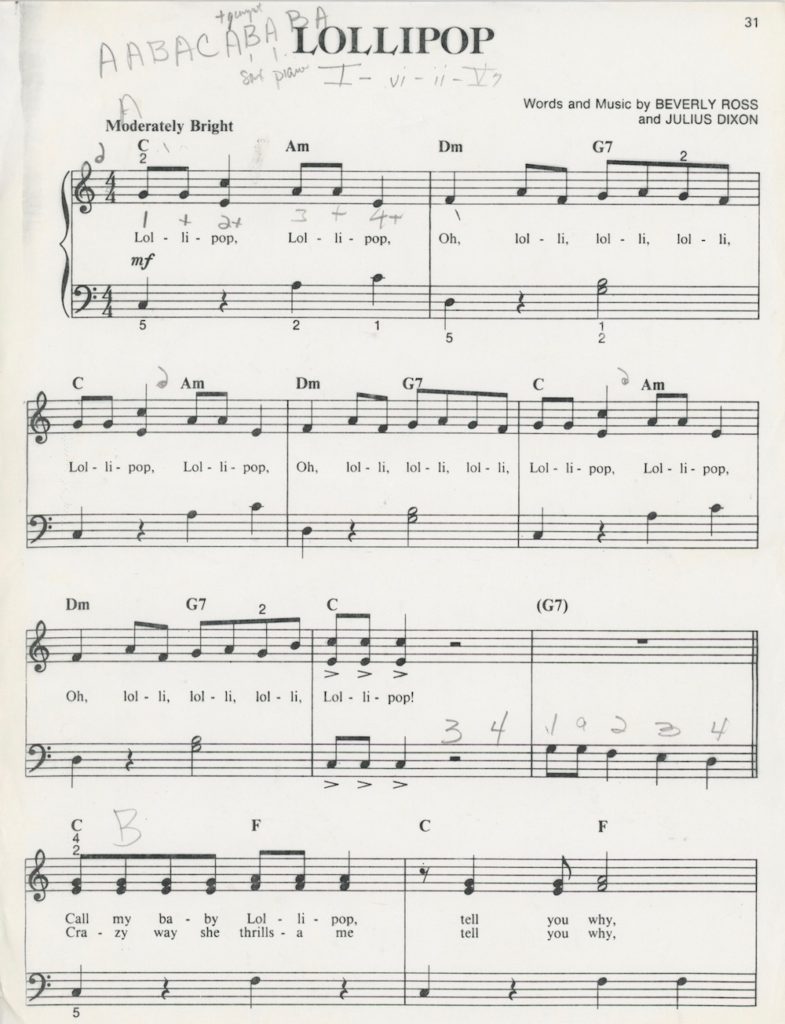
My father was sublimely happy. After all, Saturday nights were not complete unless we watched “The Lawrence Welk Show”. If Liberace had a guest spot, even better. Weeknights, though, I was held to a full hour of practice time because as he sat couch side, reading the evening paper, it was akin to being at his club sipping his Chivis Regal on the rocks listening to the night’s entertainment. All I needed was a tip jar.
He sat back, listened to my unpolished version of some of his favorite melodies and said, “If you can play the piano, you will always be a hit at parties.”
If only it were that simple.
With my classical training, I was better prepared by Mrs. Reynolds to perform for a debutante ball or to play the harpsichord for Mr. Darcy in the salon after dinner. I straddled the 19thcentury parlors of my piano teacher’s imagination and the 1950s supper clubs of my father’s dreams.
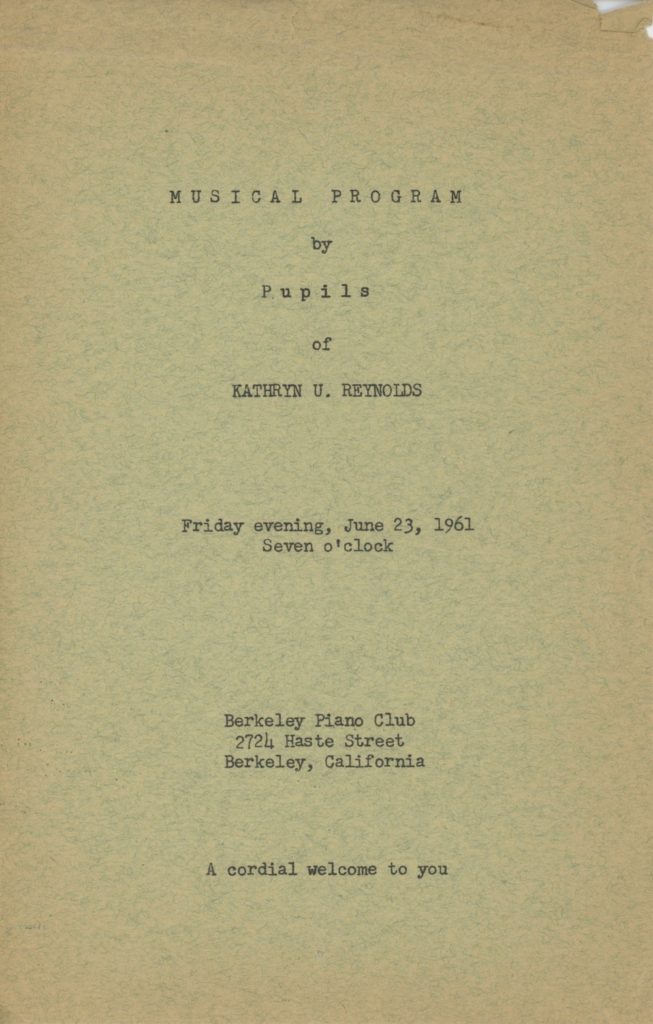
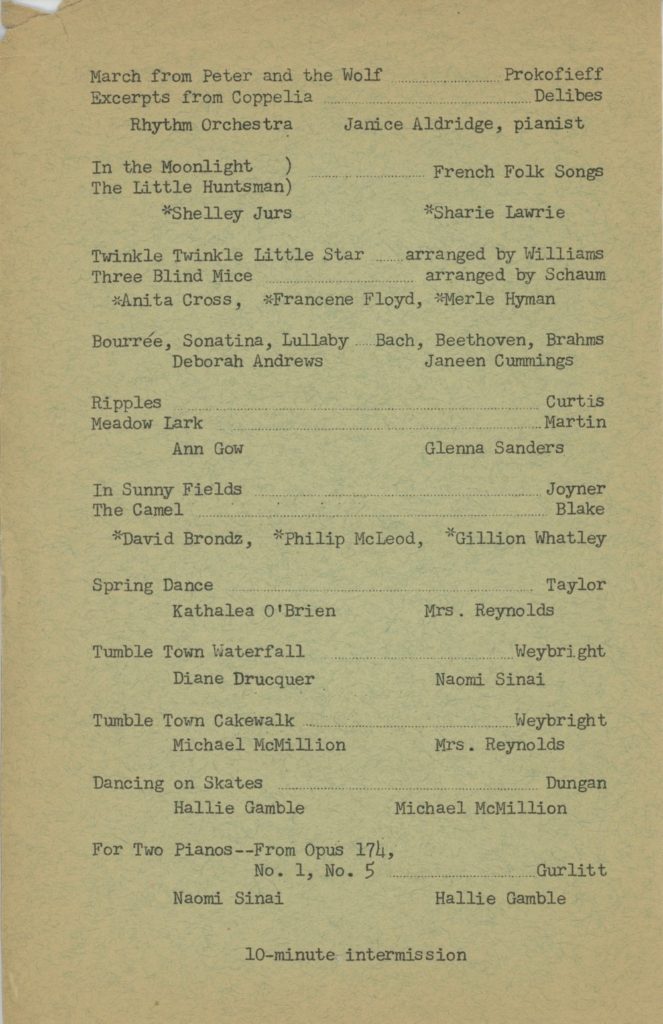
My duet partner, Hallie, was a masterful pianist. Gifted with perfect pitch, she was slumming it when she played with me. I didn’t fully appreciate her talents at the time because I was more concerned with what new dress my mother would buy me for our required piano recitals at the Berkeley Piano Club. It was clearly a bribe from my parents, but it got me to sit on that unforgiving piano bench in front of some extremely talented students and their proud parents and play, from memory, the classical repertoire that I was held to in spite of my father’s protestations. When I performed my solo, it was a terrifying experience; but back-to-back (literally) with Hallie or the delicious few times we played four-handed duets (scrunched together on the same piano bench—she kindly taking the lower octaves), I was able to soldier through. Undoubtedly she covered for me time and again. And, it was she who became my piano teacher when I paid for the lessons myself in my early 20s. By then, she owned a beautiful grand piano.
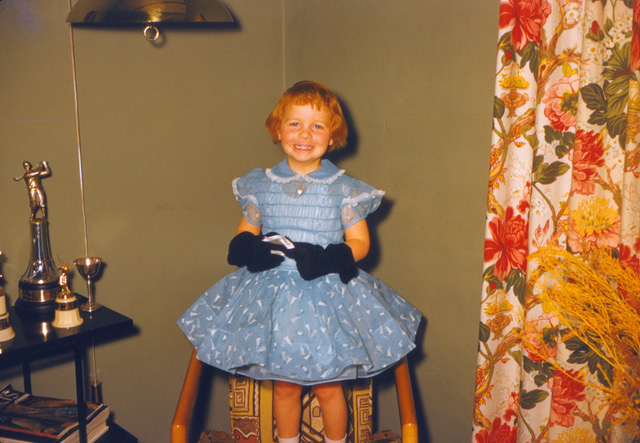
Everything is better when you have a partner. In high school, Hallie and I would play duets to entertain ourselves. We would cull music stores’ racks for vintage sheet music that had lyrics. We discovered perfect ditties like, My Blue Heaven or our favorite and the theme song from the movie, “Razor’s Edge,” Mamselle. Stoned or not, we laughed until we fell off the piano bench. My father was right. I was a hit at my own party.
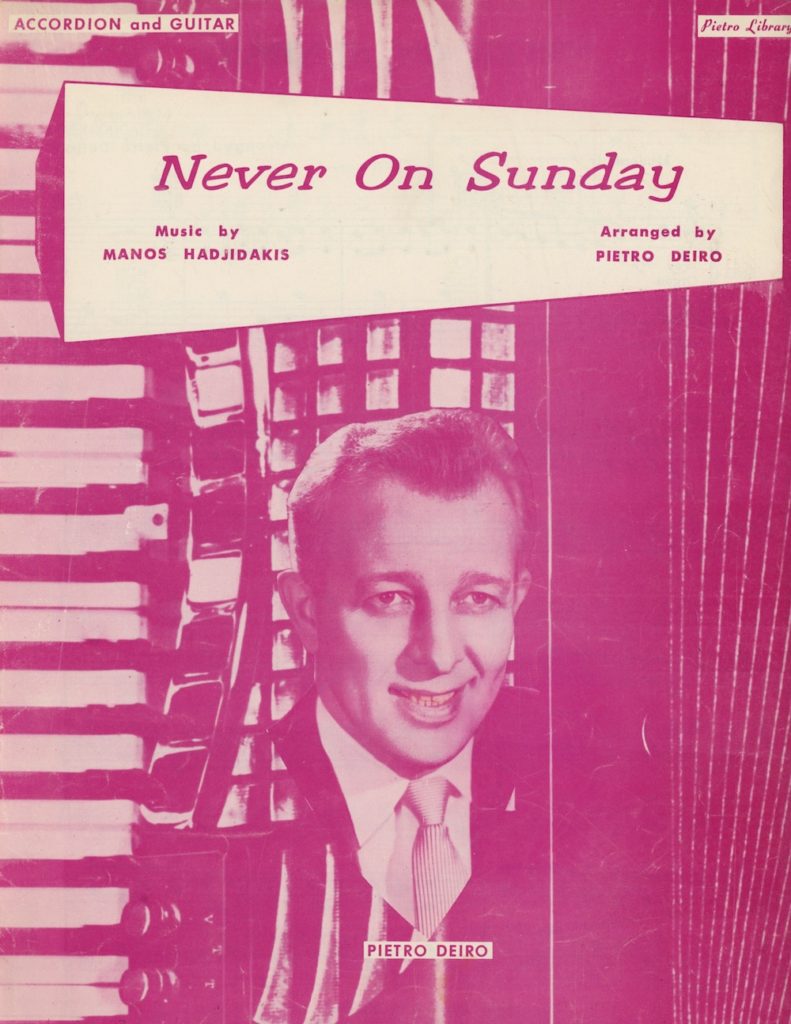
My childhood piano moved as I did. Once my mother died, my father and I were a duet careful to not cause dissonance in one another’s lives. We mastered the skill of modulating keys based on what was happening to each of us. Eventually, we had to solo but my dad offered to store the piano so I could retrieve it when it literally could fit into the space I would find myself living. So, the piano took its own journey. We loaned it to my friend who had an outtasight rock band. They lost the needlepointed piano bench, but you can’t really blame them for that, right? I retrieved the piano and moved it from post-college apartment to apartment at great cost (especially the time the mover punched a hole in the stairwell wall with the side of the instrument). The last location, before I finally sold it, was when I lived in the Mission District and was active in a women’s political collective. Deemed too bourgeois and classist to indulge in “the man’s” forms of commercial entertainment, we entertained ourselves in our own apartments with talent shows. With another duet partner by then, we performed our rendition of Body and Soul to great reviews. Of course, we had a captive, if underserved, audience.
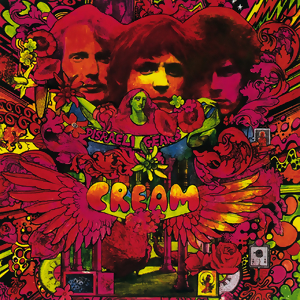
Hallie onetime told me, I think we were listening to the Cream album, “Disraeli Gears” at the moment, that she could feel music all the way down to her toes. I understand now that music passes through each of us in different ways; some of us tap our toes or nod our heads or close our eyes or sway by ourselves or in the arms of another. A favorite piece of music is to our sense of hearing as umami is to our taste buds—that special something. You know if it is missing.
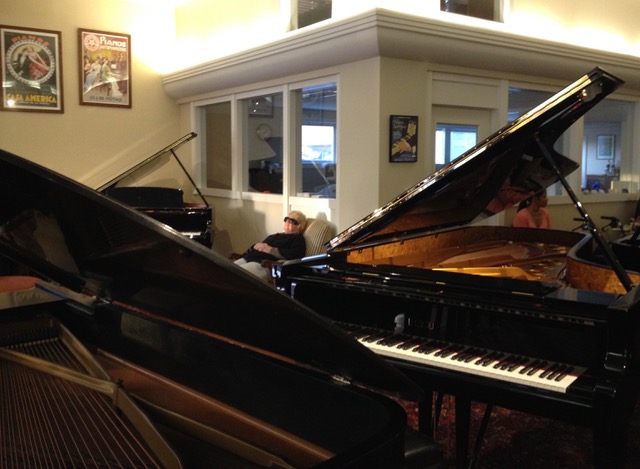
I am dedicating this blog to Hallie; she’s going through a rough patch at the moment. She finds her true north, I’m sure, when playing her harp or sitting at her keyboard, or as part of her local symphony’s audience. I picture her there, in fact, without her shoes on just so she can feel that music when it reaches her toes.
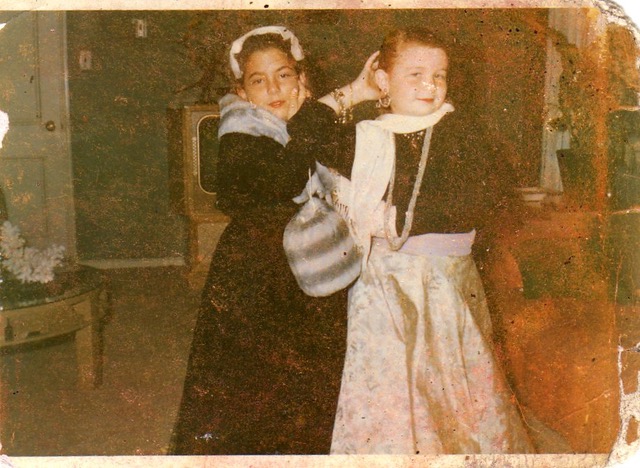
This one’s for you, Hallie.
Name that tune,![]()


Ooo Nomi, what a beautiful piece. I had shivers running down my spine when you wrote that Hallie was going through a rough patch now. Wishing her well.
Happy New Year to my friend who started 2019 before anyone else I know! Hallie is doing much better now, and I sure appreciate your concern. I shared your thoughts with her, in fact. Miss you, dear Hadassa! XO
Great Scott, how I have missed your missives! I was ready to take you to coffee and insist that you drink cups and cups of it! While you had me at Phairs, – which I had not thought about in decades – my fingers momentarily ached with the five quart empty milk jug story. While I never played piano, I tried carrying around all five in one hand a couple of times. The operative word ? “Tried”. Thanks, Naomi, for another journey back in time. I love the view. And you,
Alison
Alison, what a wonderful comment to read. I’m ferklepmt and so happy that Phairs rings a bell with my fellow Contra Costa-ian. That looks weird, but you know what I mean, I hope. Did you ever eat upstairs? Phairs, incidentally, is where I purchased my first Beatles album. Woodlands Market could learn a thing or two from Phairs about how to run a grocery store. Maybe I’ll devote a whole blog to my love affair with Phairs. In the meantime, you’re on: coffee with you would not only start my blog engine running, it would be grand to see you! Happy New Year!
Nomi, I love your remembrances and adore you and your brilliant writing skills! Now I know another reason why we feel so close to one another…”Cream”!
Ah, yes, Cream! I knew we were bonded at the hip (Pilates pun intended). Thank you for adding music to my life, dear friend, in so many ways. And, especially during these days you have just gone through, it means the world to hear from you. With love! Happy New Year!
I loved reading your latest post! You express yourself so well that I feel as though I experienced a very vivid peek into your magical childhood!
Love,
Emily
Thanks so much, Emily! I’ve never thought of my childhood as magical, so that was just such a lovely way of putting it. It was certainly one filled, as all of ours were, with love and angst. Not much has changed in that respect, either. Happy that you had a moment to chime in. Happy New Year!
Finally had time in this hectic season to read this entertaining piece. It was so you – which proves that you’re still that girl at heart. I really loved the photos you included which made it all the easier to imagine you at that stage. Thanks for the fun read and for sharing the memories and to the melodies!
Oh, Susan!!!! Happy New Year and thank you so much for this really really great comment on my blog. Marty’s photos are so fun to go through to find the right ones (we think, anyway) so he appreciated your thoughts too. XO as always!
So much here to love, like always in your blog – words and the accompanying images. I scan the piano recital program, wanting a solo for just you after all that practice. I think about the piano I grew up playing and struggling through practice myself. (Never an hour though, phew.) I was dismayed when our gorgeous piano was given away, without its matching bench. My brother was using the bench to hold his stereo components. Somethings should just stay together. At least you and Hallie’s friendship has.
I can’t believe you scanned the recital program. So old it was written on papyrus. Nevertheless, I’ve still got the program and the relationship with Hallie and even still own a piano. And, now, I’ve got you, babe. Wink Wink. It means so much to me that you read and enjoyed the blog. It was music to my ears (although that metaphor is kinda stretching things – and I don’t mean my fingers!). XO
Nomi- Doc Sinai had the right idea… with or without the piano, you have always been the hit of any party !
And I have you and Hal on film doing a dance duet to The Doors “I Looked At You” from around 1968. No piano- but still quite entertaining.
And the photos ! Adorable .♥️♥️
I guess it should be posted on youtube? Don’t you dare! Thanks for checking out the blog, GL. It’s fun to know you were right around the corner when I was doing my Rachmaninoff calisthenics. XO
Beautiful piece, Naomi! Brought back all those piano lessons so vividly. I still have the piano I practiced on at age 7 — slightly battered as it is. So amazed at all your talents and delighted that you have found yet another way to express them — to our great benefit!
Happy New Year to you and your family! Love, Svetlana
Thank you dear friend! How nice to hear from you, and Happy New Year to you and yours too! Wow, you still have your piano? That’s such a commitment and yet such a delightful reminder of your past while having the instrument be such a big part (in space allotment alone!!!!!) of your day-to-day life. I really appreciate your kind words about my writing too. They mean so much to me. XO
Oh, man–this brought back memories of my brief stint as a piano student. I remember wanting desperately to learn Saber Dance, and playing it (not very well) at the recital. The recital was pure torture–I was hideously self conscious and nervous so that my memory would blank. After that I asked to be relieved of the lessons, and discontinued. I still love music, but perform only as a singer.
What a fun comment, George! Recital torture is such a common thread for so many of us! I’m glad that you still love music and still perform. That’s awesome. Thank you for taking the time to write a comment.